July 19, 2023
Scalding Heat & Sunburned Plants
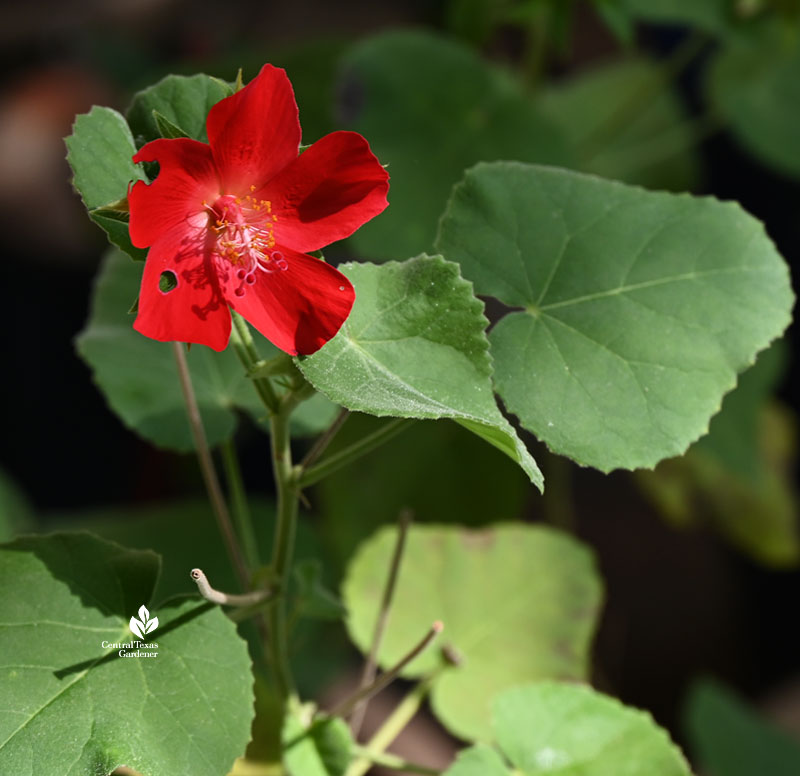
Hit a sunlit stone or concrete patio in bare feet right now and you’re bound to holler “Youch!” It’s the same for many sun-loving plants, too. So, I’ve moved my containers closer into patio roof cover away from the direct line of fire. Even native Heartleaf rosemallow (Hibiscus martianus) looked a little bleached.
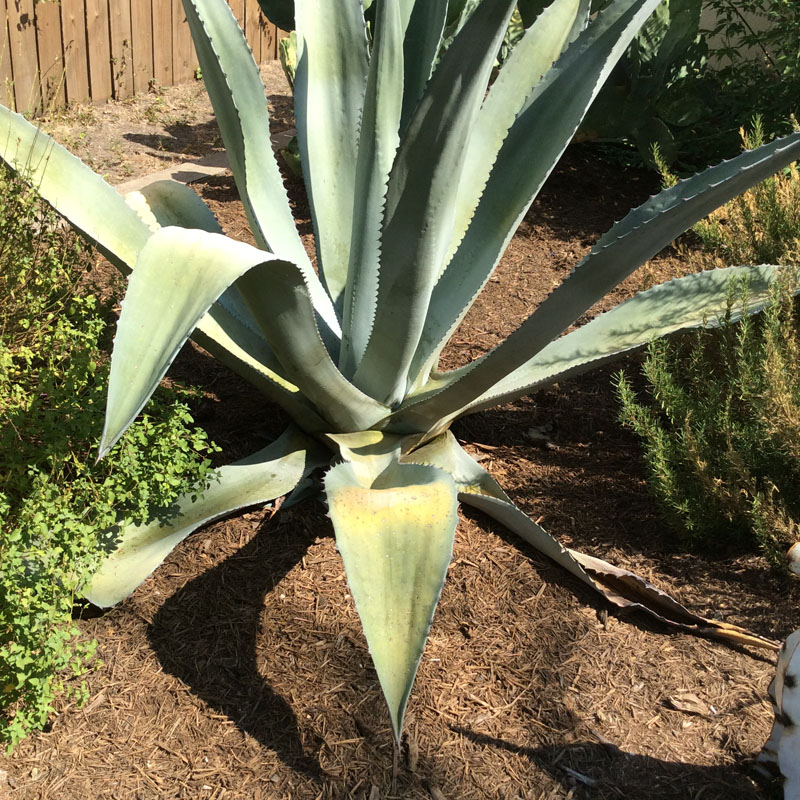
It’s the same for agaves and cactus, too. A few years ago, Daphne Richards and Jeff Pavlat from the Austin Cactus & Succulent Society answered Marissa Garrett’s question about her yellowing Agave americana.
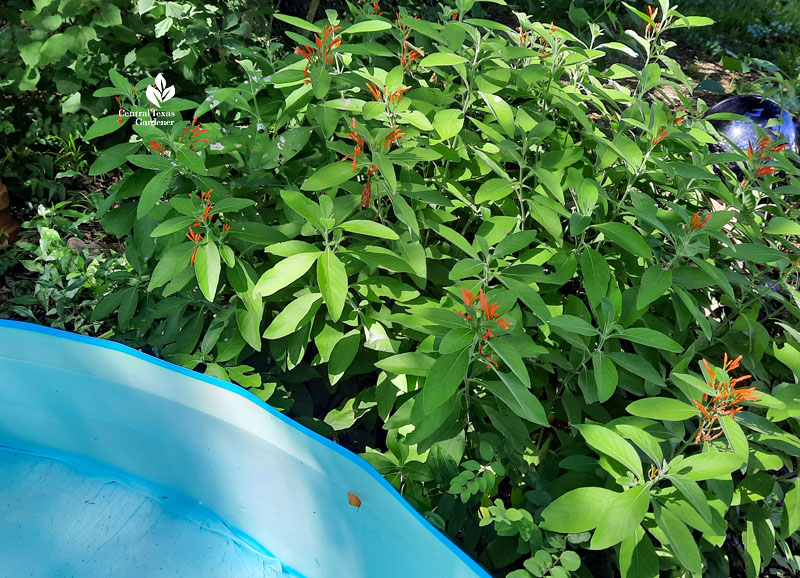
When it’s 104° in my backyard, even after work, splashing around in a 6-ft. kiddie pool turns the flame down. Hummingbirds gratefully sip Mexican honeysuckle (Justicia spicigera). I’ve got lots of native plants for them, too, but this one’s size and soft leaves fit the bill for a poolside border in part shade. In milder winters, it’s evergreen and even blooms. Freeze slams take it to the ground, but in any case, I cut it back in February/March with the other perennials. Note: this area is usually shadier, but limbing up this year upped the sun factor.
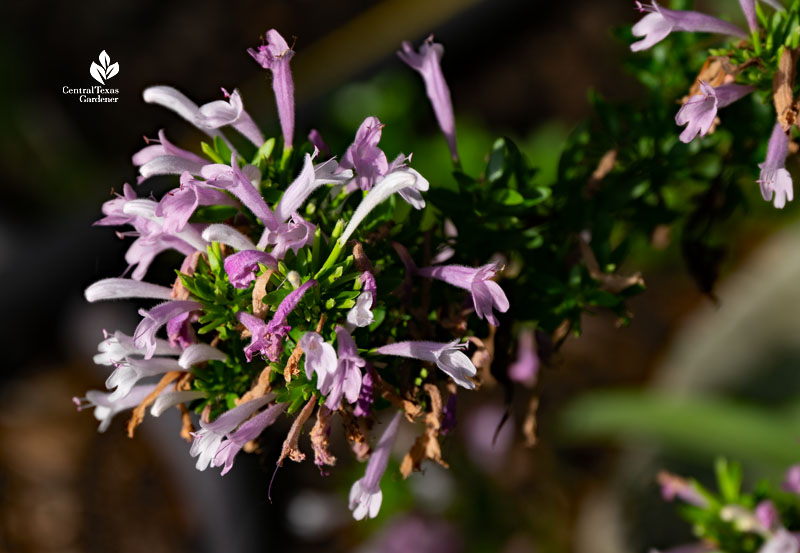
Hummingbirds also go for my Mexican oregano’s tubular lavender flowers that visually cool things down, too. But “Mexican oregano” is not enough to identify this perennial. This is Poliomintha longiflora. One whiff of its aromatic leaves sends me to the kitchen with clippings. Native to Mexico, it handles my part shade spots through drought, freeze, snow, and rain buckets. Someday, I’ll find a spot for Lippia graveolens, another called Mexican oregano.
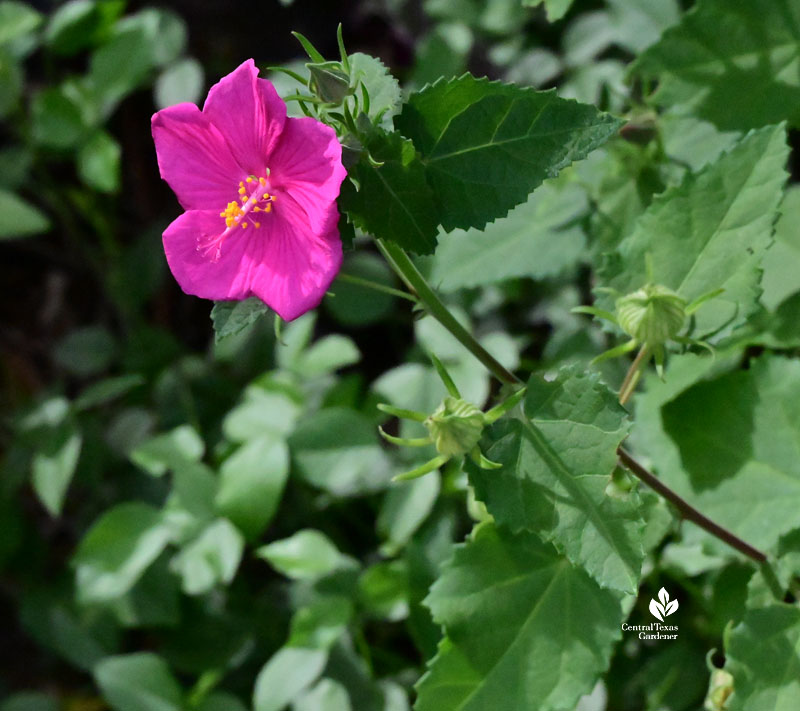
Butterflies and moths join hummingbirds on native rock rose (Pavonia lasiopetala) that takes full sun to part shade. It’s even seeded out in spots that rarely (or never) get supplemental water. But, like many of my plants, the extended heat, no rain, and little irrigation is taking a toll on flowering. I’ve never lost an established plant in summers like this, but they certainly looked a lot better a few weeks ago when I took these pictures.
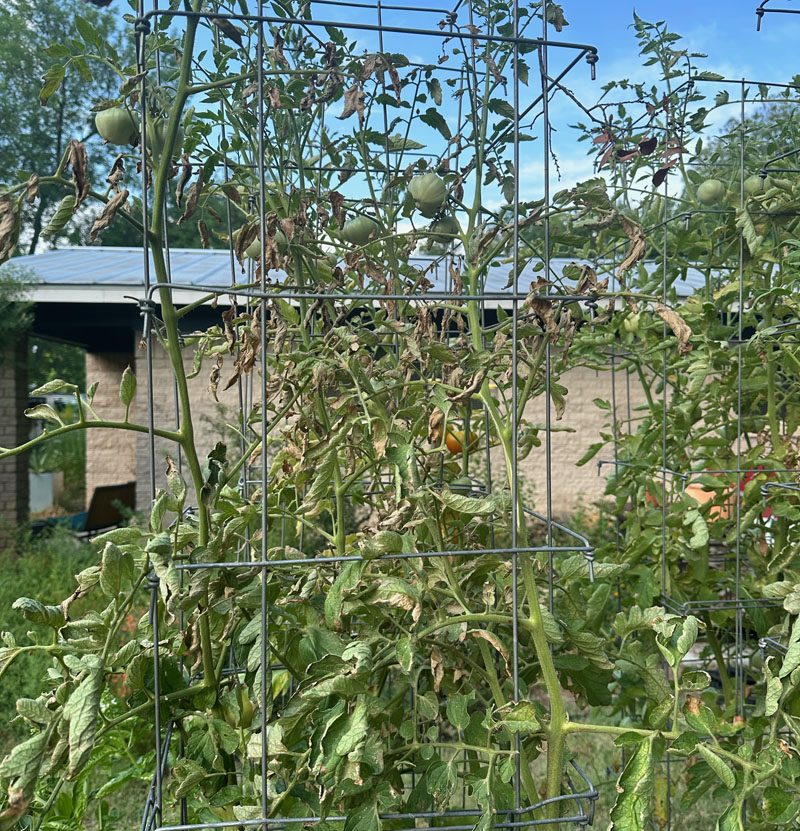
If tomato plants are looking diseased, go ahead and pull them out. In June, Laura Zebehazy asked about her troubled tomatoes. Sheryl Williams, Horticulture Program Assistant for Travis County Extension, confirmed that this is blight and may be too far gone to treat. If caught earlier, “Fungicides containing copper sulphate can zap the problem but will probably have to be reapplied during the entire growing period (usually every 2 weeks or 10 days, according to label directions),” she said. “These problems always show up when we have a combination of heat + rain + humidity.”
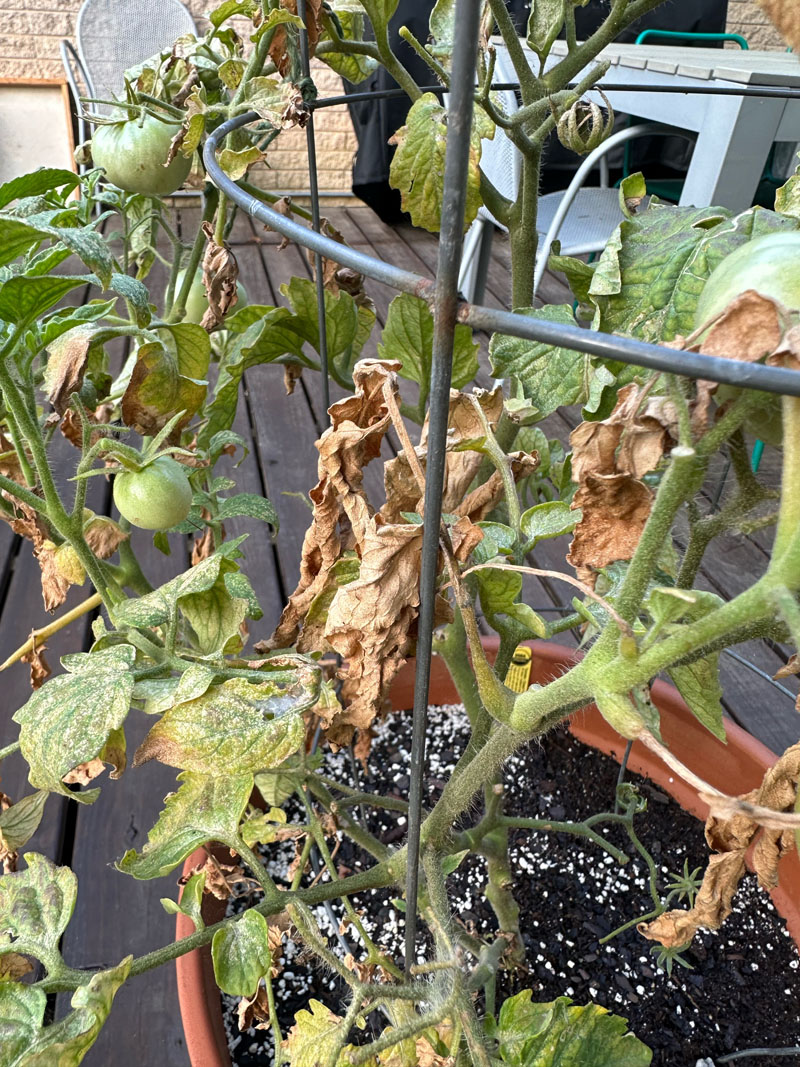
Sheryl provided links for future reference: Info on blight and other tomato diseases; and details about copper sulphate and other herbicides and pesticides.
Get Texas A&M’s guide to yellow tomato leaves and other tomato troubles.
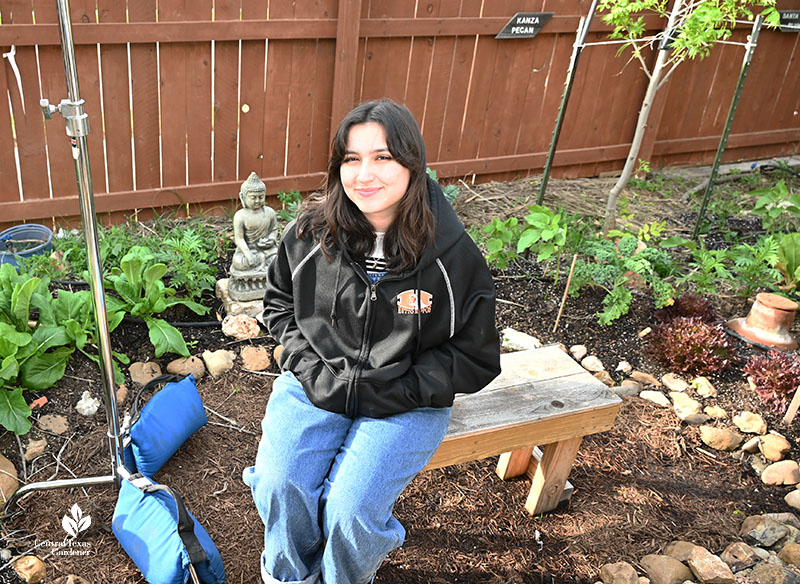
Now for some gorgeous shots from Slovakia! Nastassja Collak, a May graduate from The University of Texas, spent part of her last semester as an invaluable Austin PBS intern.
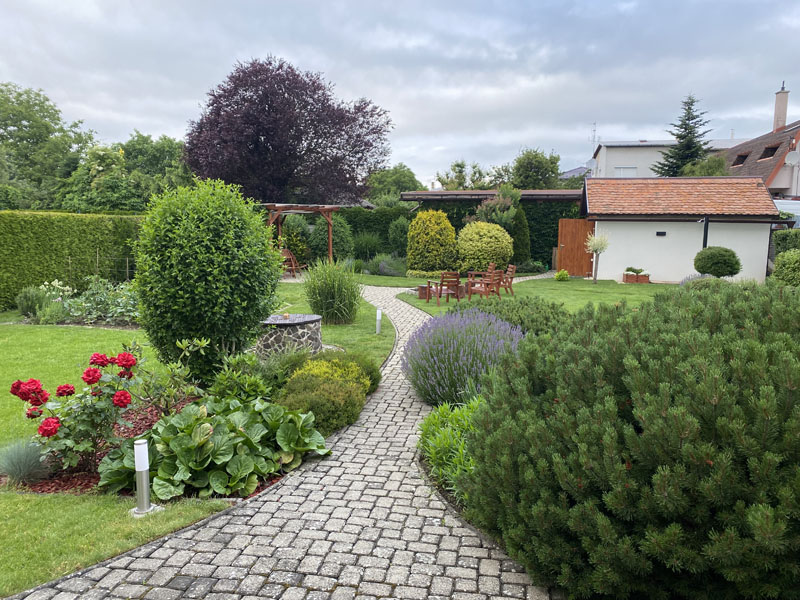
Her family heralds from Slovakia, and when she visited her grandparents this summer, I asked if she could send pictures from her grandfather’s garden.
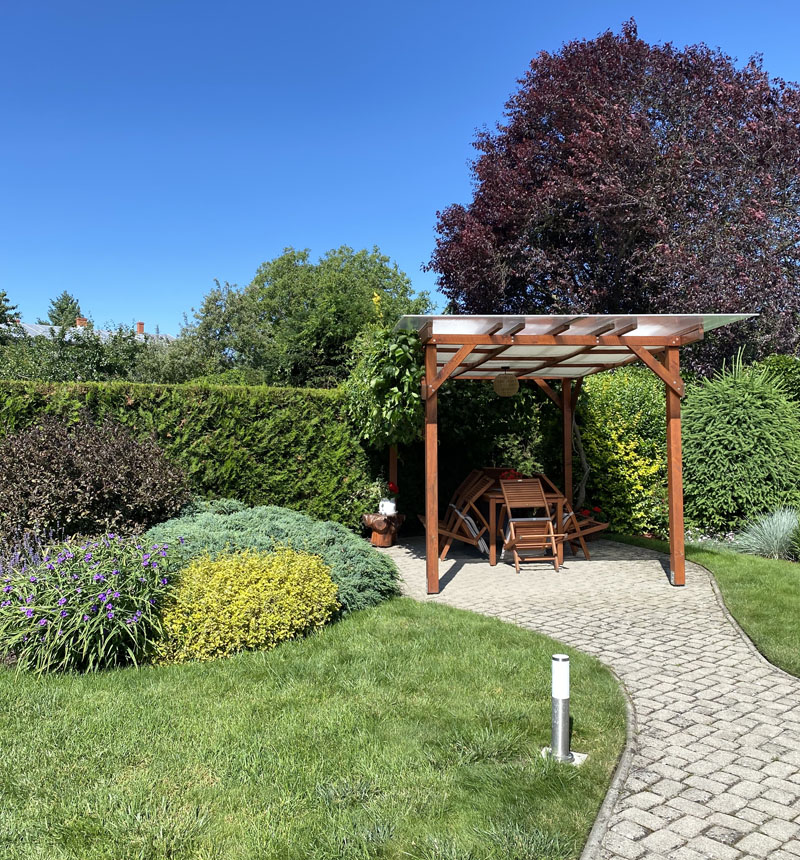
Isn’t it dreamy?
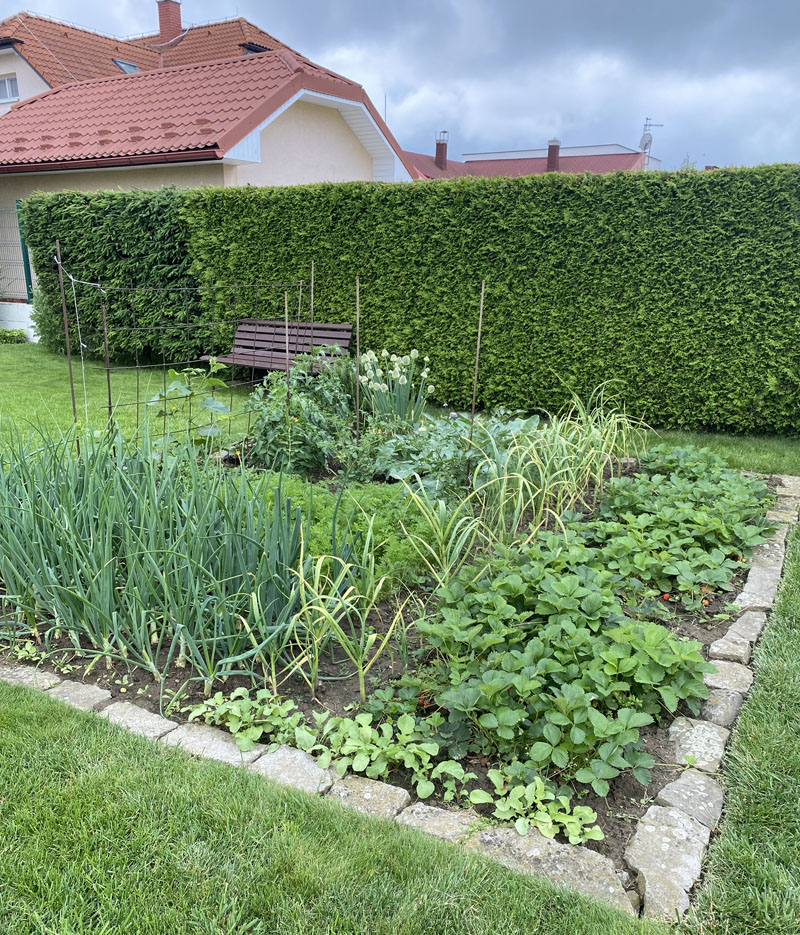
He does it all himself, too. Even his food gardens follow design aesthetics to bring together diverse forms, height, foliar color and flower color.
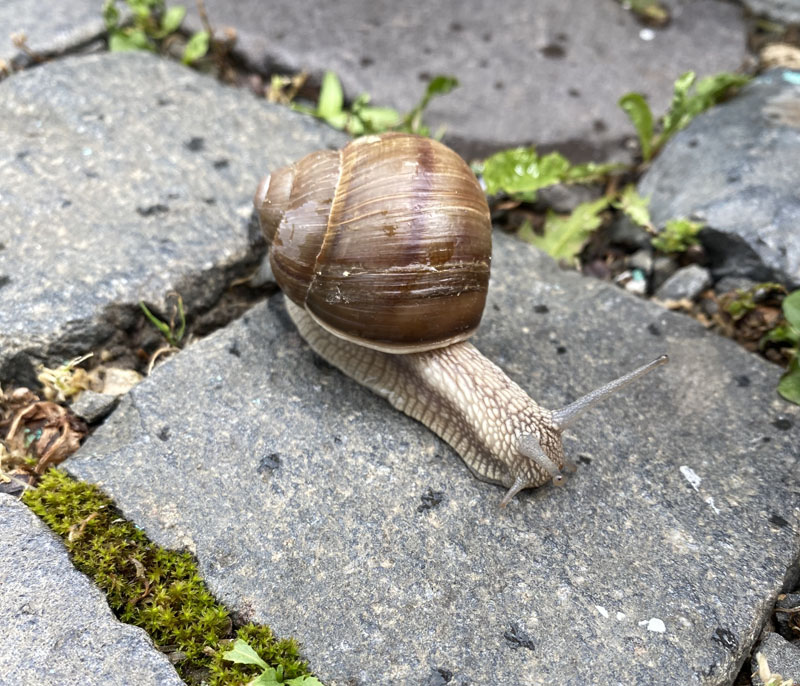
Best yet, Nastassja reports that it was 70s and 80s during the day and 60s at night. Lucky snail! Great capture, Nastassja, and congratulations on your first post-college job in Austin!
And thank you all for stopping by! Linda
tags:

